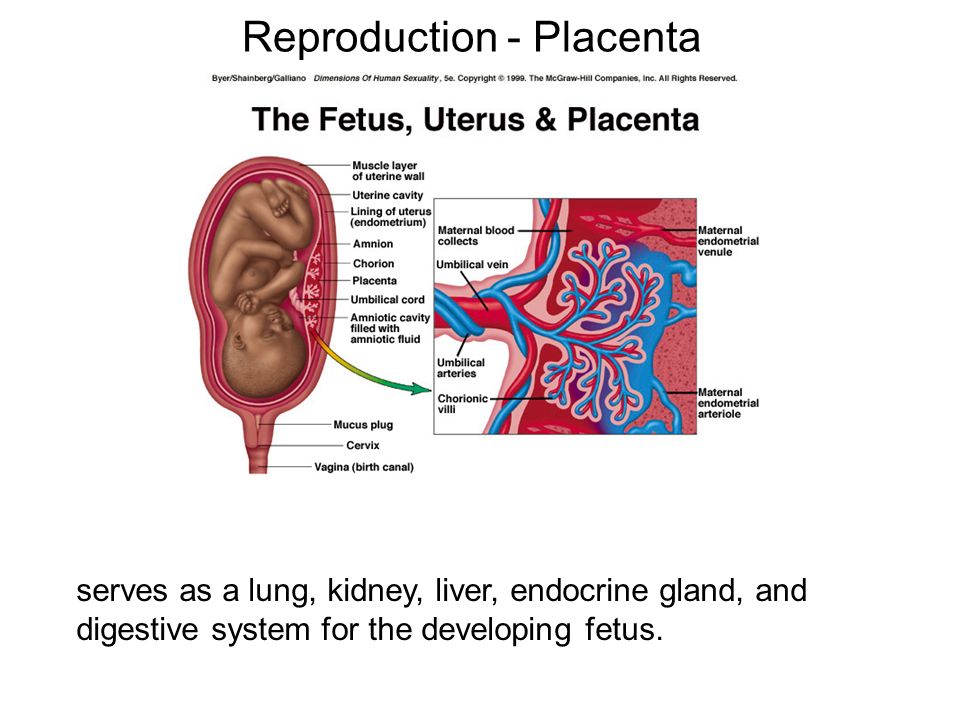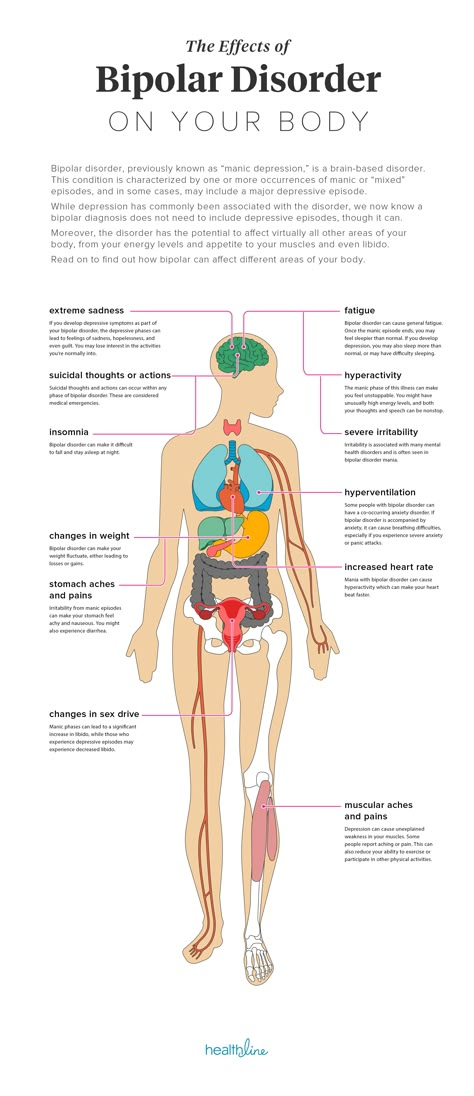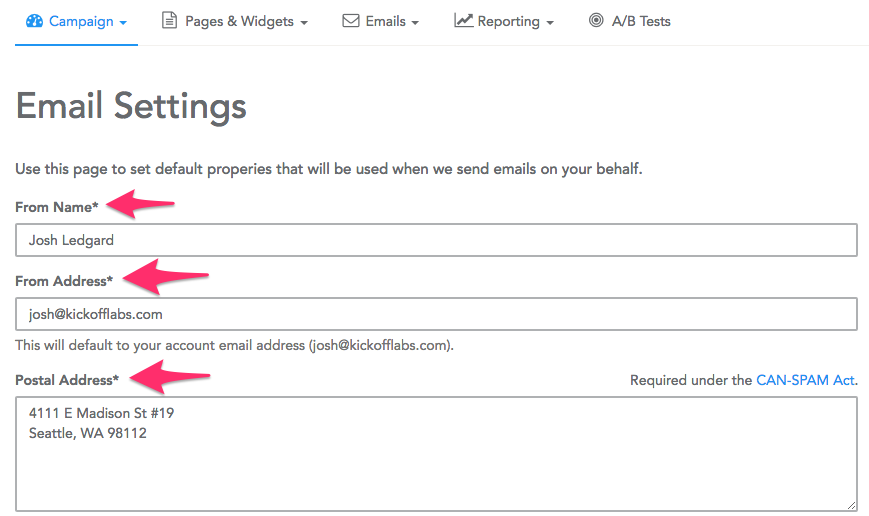Breastfeeding and solid foods
Working Together: Breastfeeding and Solid Foods
Breastfeeding, like many other aspects of parenting, is a gradual process of increasing independence and self-mastery on your baby’s part and a gradual stepping back on yours. You may have already experienced the beginnings of this process during the first half year of life as your baby learned to enjoy drinking expressed breast milk from a bottle or cup and you began to go places without her. Still, the two of you were closely tied to each other in a nutritional sense: your child thrived on your breast milk alone, which provided the nutrients she needed.
During the second half of the year, your breast milk will continue to provide the great majority of necessary nutrients as she starts to sample a variety of new foods. Though your baby will no doubt greatly enjoy the introduction of new tastes and textures in her life, her experiences with solid food are still just practice sessions for the future. It’s important to make sure she continues getting enough breast milk to meet her nutritional needs.
Introducing foods
The American Academy of Pediatrics recommends breastfeeding as the sole source of nutrition for your baby for about 6 months. When you add solid foods to your baby’s diet, continue breastfeeding until at least 12 months. You can continue to breastfeed after 12 months if you and your baby desire. Check with your child’s doctor about vitamin D and iron supplements during the first year.
Parents with food allergies are often advised to avoid foods that commonly cause allergic reactions (such as cow’s milk, dairy products, and foods made from peanuts or other nuts). But recent research found that the late introduction of certain foods may actually increase your baby’s risk for food allergies and inhaled allergies. You should discuss any concerns with your pediatrician.
If no allergies are present, simply observe your baby for indications that she is interested in trying new foods and then start to introduce them gradually, one by one. Signs that the older baby is ready for solids include sitting up with minimal support, showing good head control, trying to grab food off your plate, or turning her head to refuse food when she is not hungry.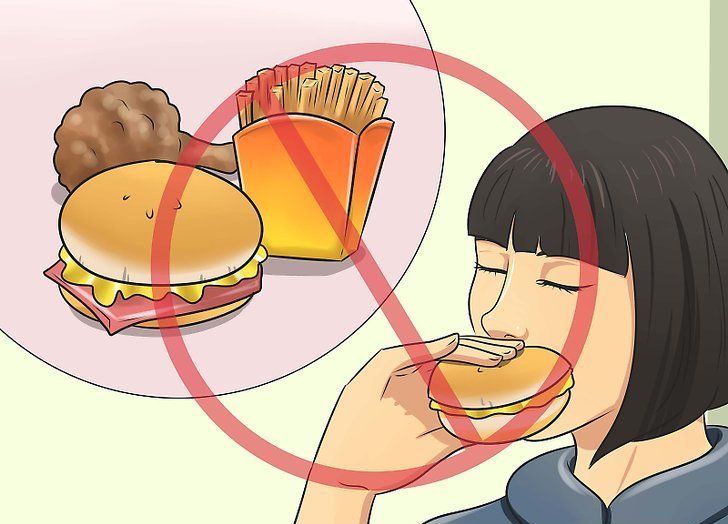 Your baby may be ready for solids if she continues to act hungry after breastfeeding. The loss of the tonguethrusting reflex that causes food to be pushed out of her mouth is another indication that she’s ready to expand her taste experience.
Your baby may be ready for solids if she continues to act hungry after breastfeeding. The loss of the tonguethrusting reflex that causes food to be pushed out of her mouth is another indication that she’s ready to expand her taste experience.
First foods
Since most breastfeeding babies’ iron stores begin to diminish at about six months, good first choices for solids are those rich in iron. Current recommendations are that meats, such as turkey, chicken, and beef, should be added as one of the first solids to the breastfed infant’s diet. Meats are good sources of high-quality protein, iron, and zinc and provide greater nutritional value than cereals, fruits, or vegetables.
Iron-fortified infant cereal (such as rice cereal or oatmeal) is another good solid food to complement breast milk. When first starting infant cereal, check the label to make sure that the cereal is a single- ingredient product—that is, rice cereal or oatmeal—and does not contain added fruit, milk or yogurt solids, or infant formula.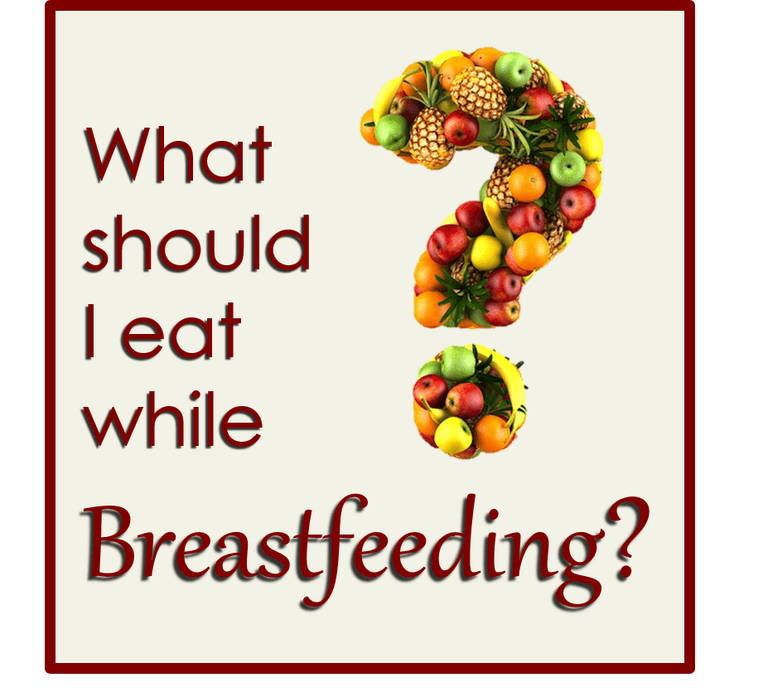 This will decrease the likelihood of an allergic reaction with the initial cereal feedings. You can mix the cerealwith your breast milk, water, or formula (if you’ve already introduced formula to your baby) until it is a thin consistency. As your baby gets used to the taste and texture, you can gradually make it thicker and increase the amount.
This will decrease the likelihood of an allergic reaction with the initial cereal feedings. You can mix the cerealwith your breast milk, water, or formula (if you’ve already introduced formula to your baby) until it is a thin consistency. As your baby gets used to the taste and texture, you can gradually make it thicker and increase the amount.
Once your child has grown accustomed to these new tastes, gradually expand her choices with applesauce, pears, peaches, bananas, or other mashed or strained fruit, and such vegetables as cooked carrots, peas, and sweet potatoes. Introduce only one new food at a time and wait several days before you add another new food, to make sure your child does not have a negative reaction.
As you learn which foods your baby enjoys and which ones she clearly dislikes, your feeding relationship will grow beyond nursing to a more complex interaction— not a replacement for breastfeeding, certainly, but an interesting addition to it. Remember to keep exposing your baby to a wide variety of foods. Research indicates that some babies need multiple exposures to a new taste before they learn to enjoy it. The breastfed baby has already been experiencing different flavors in the mother’s breast milk, based upon her diet, so solid foods often have a familiar taste when introduced to the breastfed baby.
Research indicates that some babies need multiple exposures to a new taste before they learn to enjoy it. The breastfed baby has already been experiencing different flavors in the mother’s breast milk, based upon her diet, so solid foods often have a familiar taste when introduced to the breastfed baby.
Babies need only a few spoonfuls as they begin solids. Since these first foods are intended as complements and not replacements for your breast milk, it’s best to offer them after a late afternoon or evening feeding, when your milk supply is apt to be at its lowest and your baby may still be hungry.
Some pediatricians recommend an iron supplement. If this is the case, be careful to give the exact dose prescribed by your doctor. Always store iron and vitamin preparations out of the reach of young children in the household, since overdoses can be toxic.
You may find that the number of breastfeedings will gradually decrease as her consumption of solid food increases. A baby who nursed every two to three hours during early infancy may enjoy three or four meals of breast milk per day (along with several snacks) by her twelfth month.
Unless you intend to wean her soon, be sure to continue breastfeeding whenever she desires, to ensure your continuing milk supply. To ease breast discomfort, it may become necessary to express a small amount of milk manually on occasion, if her decreasing demand leaves you with an oversupply. Breast comfort is another reason why a gradual introduction of solid foods is advisable, since it allows your body time to adapt to changing demands. Over the span of several months, a readjustment in the supply-and-demand relationship can take place smoothly and painlessly.
The information contained on this Web site should not be used as a substitute for the medical care and advice of your pediatrician. There may be variations in treatment that your pediatrician may recommend based on individual facts and circumstances.
Starting Solid Food - La Leche League GB
Human milk is the perfect first food
Introducing your baby to other foods is a big milestone, and can be fun too.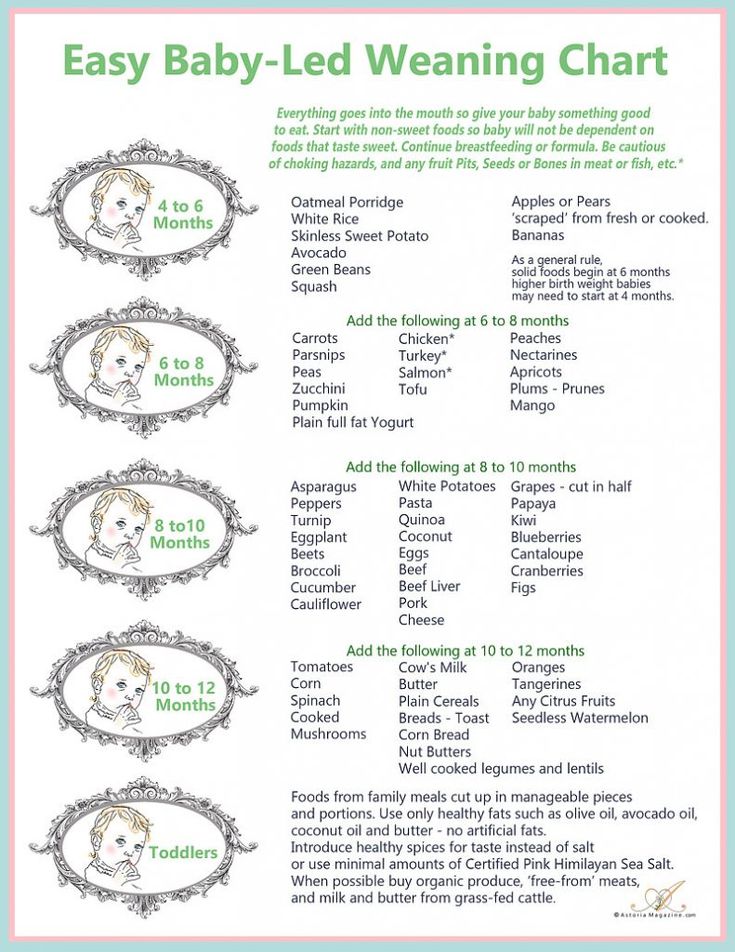 The simplest approach is to continue your usual breastfeeding pattern and let your baby join you at family mealtimes. Your baby will be able to learn about new foods gradually and in their own time.
The simplest approach is to continue your usual breastfeeding pattern and let your baby join you at family mealtimes. Your baby will be able to learn about new foods gradually and in their own time.
Signs of readiness for complementary foods
Babies begin eating solid foods according to their own unique timetables, just as they will walk and talk when they are ready. Readiness to try new foods is just another developmental step and it isn’t necessary to do anything special.
Babies show signs of readiness for complementary foods (to complement their milk intake) around the middle of the first year.
Although previous research suggested that signs of readiness for starting solids were related to developmental changes which happen at around 4 months, recent research indicates the following signs of readiness:1
Fact: Ability to sit up well when supported
Once your baby can sit up well when supported (for at least a few minutes) let them join you at family mealtimes and allow them to pick up food.
Fact: Loss of the tongue thrust reflex
Babies who have not yet lost their tongue thrust reflex will push food out of their mouth with their tongue. The tongue thrust reflex is a sign that they are not developmentally ready for solid food.
Fact: Ability to pick up food, put it in their mouth and chew
A baby who is able to reach out and grab a piece of food, then bring it to their mouth and chew it is generally ready for solids. Research indicates that the ideal time to start solid food in terms of oral-motor developmental readiness is between six and eight months. As with other developmental stages, babies learn to chew when they are ready, not because solid food has been introduced by six months.
Myth: Breastfeeding more often
Your baby may ask to breastfeed more, yet still not be ready for solid food. They may just be unwell, having a growth spurt, teething, or reacting to stress. Offering your baby both breasts during each feed may be all that is needed.
Myth: Waking at night
Waking at night is normal and common behaviour and is not a sign that a baby is ready to start other foods even if they have previously slept for longer periods.
Myth: Watching you eat
Babies are interested in and want to copy what they see around them, so watching others eat does not necessarily mean they are ready to start eating solid foods.
Why follow your baby’s cues?
Human milk is the most important food in your baby’s diet during their first year, providing them with most of the calories and fluids they need, as well as a wide range of nutrients. Allowing solids to replace breastmilk too quickly may lead to undernutrition, imbalance of nutrients, or poor weight gain. Breastfeeding continues to be a valuable source of nutrition and calories if your baby is unwell or teething, and doesn’t want to eat solid food.
Breastfeeding provides your baby with antibodies, other immune factors, stem cells, and many other components unique to breastmilk. Breastfeeding alongside introducing solids helps to prevent harmful bacteria, such as E.coli, growing in your baby’s gut. Replacing your milk with solid food too early reduces the level of protection they receive.
Breastfeeding alongside introducing solids helps to prevent harmful bacteria, such as E.coli, growing in your baby’s gut. Replacing your milk with solid food too early reduces the level of protection they receive.
Developmental readiness inside and out
Your baby’s digestive system gradually matures during the first six months. Introducing solids when your baby is developmentally ready means they will be able to eat and digest these new foods.
Preterm babies, babies with special needs or developmental delay may not be ready for solids until later than six months. Following their readiness signs will help you know when to offer solids. Speak to your baby’s healthcare team regarding their individual nutritional needs.
Carry on breastfeeding
Starting solid food is a new experience for your baby and is about taste, texture and learning new skills, not about replacing your milk. Babies are more likely to try something new if they aren’t too hungry – they may refuse solids when they really want to breastfeed. Remember that your baby isn’t likely to eat very much to start with.
Remember that your baby isn’t likely to eat very much to start with.
You may feel pressured into limiting breastfeeds so that your baby will take more solid food, but this can have the opposite effect. If your baby is happy and content after a breastfeed they may be more open to the idea of trying some new foods.
Breastmilk gradually and gently introduces babies to the foods their mother eats because traces of those appear in her milk. This provides a variety of flavour experiences in a natural way, helping prepare the baby for the foods they will eat at the family table. Babies will want to eat whatever food is on the table, so this is a good opportunity to review the whole family’s diet.
First tastes
Baby–led weaning
The principle behind baby-led weaning is that babies will instinctively start to feed themselves when they are developmentally ready, given the opportunity. The skills to feed themselves and readiness of their body to process food occur naturally and do not need to be taught.
Babies who are in control of feeding themselves (in contrast with spoon feeding) will only be able to pick up food, put it in their mouth and chew it when they are developmentally ready. This approach also lets babies determine which foods and how much they want to eat: they will naturally progress at their own pace and reduce breastfeeds when they are ready.
Allowing babies to join in with family mealtimes will expose them to a wide variety of different foods, enable them to copy how other children and adults eat, and help make eating a pleasant experience, encouraging a positive lifelong relationship with food. A baby who is allowed free choice of good, nutritious foods tends to balance their own diet.
For more information on baby-led weaning, see book Baby-led Weaning: The Essential Guide (2019).
How to present food – shapes and sizes
Babies love to use their hands, so offer foods that they can easily hold and put into their mouth. Until they have developed a pincer grip, babies can’t pick up small pieces of food. Offer sticks or pieces of food the shape/size of an adult’s finger. Most 6-month-old babies will be able to pick up the piece, hold it in their fist and gnaw the end sticking out of their fist.
Offer sticks or pieces of food the shape/size of an adult’s finger. Most 6-month-old babies will be able to pick up the piece, hold it in their fist and gnaw the end sticking out of their fist.
Softer foods can be spread on unsalted oat cakes, rice cakes or crackers, or dipped into with a suitable piece of food so your baby can manage by themselves. For tastes of soup, yoghurt or porridge, offer your baby a spoon with a small amount of food on, or let them dip their fingers in and lick off the food.
Different tastes and textures
It is important to offer your baby a wide variety of different foods as this will expose them to a range of tastes and textures. The ability to explore the different taste, texture,colour and smell of food may help babies to have a healthier relationship with food.
Aim to offer tastes of a wide variety of foods in as close to their natural state as possible. Given access to a range of food groups, your baby will show you what they need. If they don’t want a certain food, try something else, but do offer it again.
If they don’t want a certain food, try something else, but do offer it again.
You don’t need to purée foods or even mash them. Puréeing often requires liquid to be added, diluting the nutritional content. Solid (un-mashed) food aids development of chewing skills, which babies don’t get from sucking puréed food. Early exposure to different textures can also prevent a baby refusing to eat lumpy food later on.
Gagging and choking
Gagging happens when food triggers a baby’s gag reflex and the food is pushed forwards to prevent it from blocking the airway. A baby gagging will usually be calm and breathing normally. Gagging is a natural protective mechanism to prevent choking and usually doesn’t need any intervention.
Choking happens when a baby’s airway is (fully or partially) blocked and they can’t breathe. A baby choking will be coughing or silent (unable to make any noise), not breathing, and their face or lips may change colour.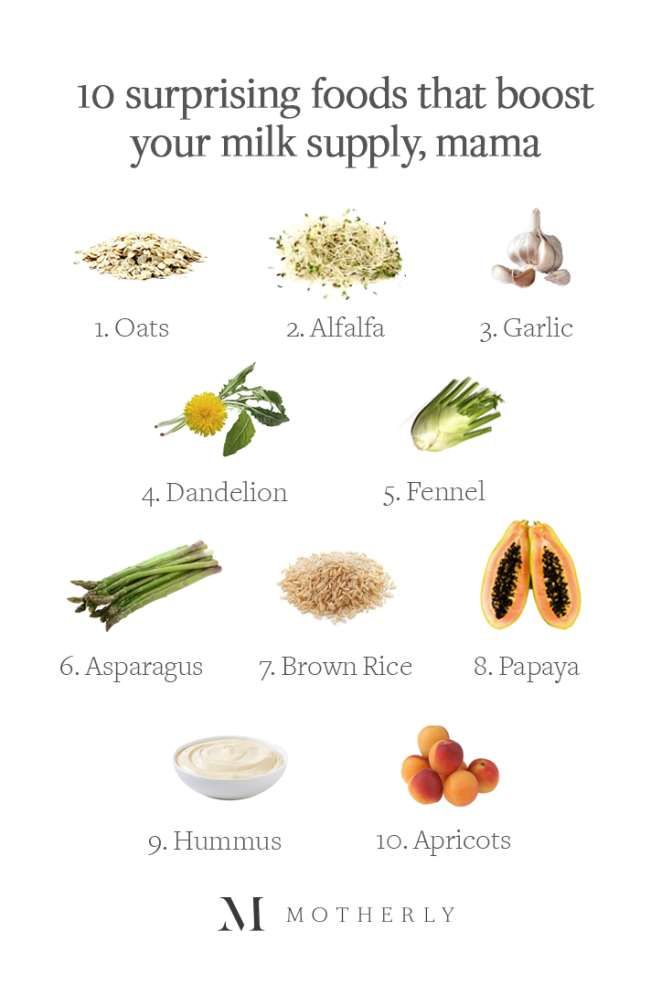 Choking is an emergency and they may need first aid to clear the blockage.
Choking is an emergency and they may need first aid to clear the blockage.
Babies are less likely to choke on food if they are sitting upright and feeding themself. Research shows baby-led weaning is not associated with an increased risk of choking.2
Certain foods are a choking risk for children under three years of age and should be avoided, including whole grapes, whole cherry tomatoes, popcorn, large amounts of peanut butter and any food that could break off in large chunks, such as raw carrot, hard apple or celery sticks. Nuts are a choking risk up to five years of age.
At first, you may want to check your baby’s mouth for unswallowed food after a meal, including their cheeks and palate. Never leave your baby alone with food or when they are eating.
Plan for a little mess!
Solid foods are another part of the world your baby is exploring and they will do this as much by touch and smell as by taste. This can be messy, but is an important learning experience for them.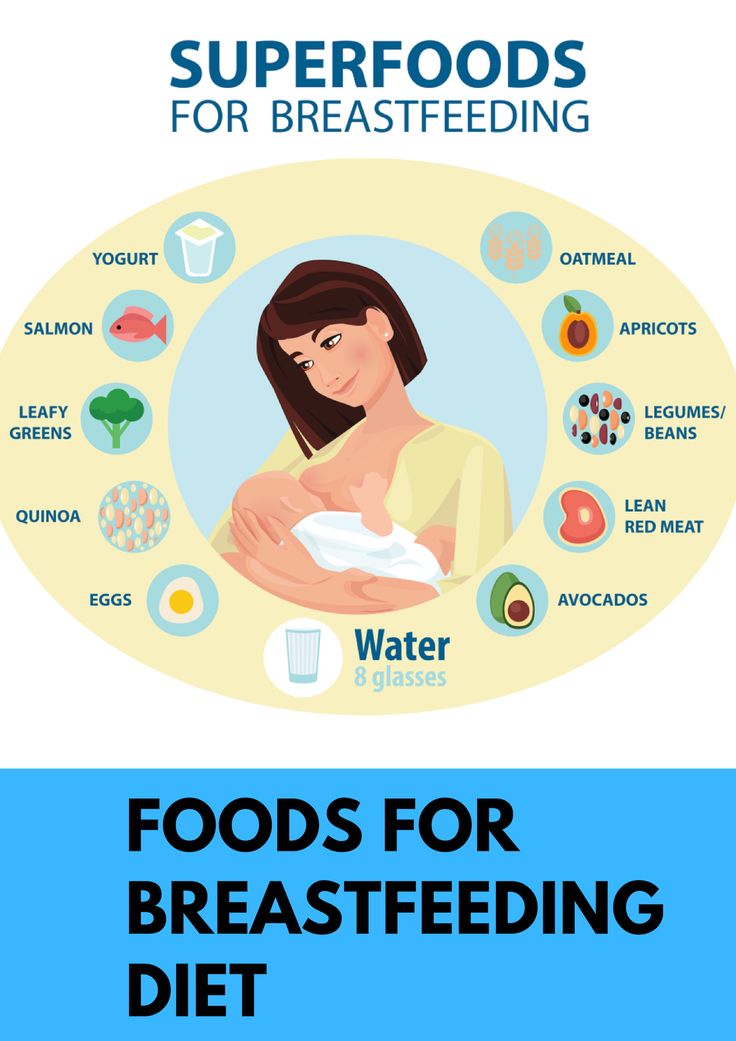 To make cleaning up easier, roll up their sleeves, use a bib or apron and put a clean plastic cloth on the floor so you can safely re-offer dropped foods.
To make cleaning up easier, roll up their sleeves, use a bib or apron and put a clean plastic cloth on the floor so you can safely re-offer dropped foods.
Natural appetite control
It is normal for your baby’s appetite to go up and down over the course of days, weeks and months. Don’t worry. Just offer more of any food they ask for and stop when they don’t want any more. There is no need to ‘top them up’ with a spoon if they haven’t eaten much at a meal. Allowing a baby to feed themselves and take their time over a meal helps them to tune in to their feelings of fullness and to stop eating, which is important throughout their life.
If your baby refuses food, they are not rejecting you or your efforts. They may simply not be hungry. If they are ill or teething, unrestricted breastfeeding will ensure they receive good nutrition and will comfort them until they feel well and interested again.
Allergy & Food Intolerance
Common allergens
The most common allergens (in order of incidence) are:
- Milk and other dairy products such as butter, yoghurt, cheese, whey, casein, caseinate, lactose
- Egg
- Peanut and tree nuts (almonds, hazelnuts, walnuts, cashews, etc.
 )
) - Soy
- Wheat
- Fish and Shellfish: crustaceans (e.g. crab, lobster, crayfish, shrimp, prawn), molluscs (e.g. mussels, oysters, squid)
- Sesame seeds (in tahini and hummus)
- Lupin/lentils (including chickpeas which are in hummus)
- Fenugreek (closely related to peanuts)
- Celery and celeriac
- Mustard
Introducing peanut and egg
Peanut and hen’s egg are common allergens for babies. Current guidance recommends that foods containing peanut or hen’s egg need not be differentiated from other solid foods and can be introduced from around 6 months along with other foods.
The deliberate exclusion of peanut or hen’s egg beyond 6 to 12 months of age may increase the risk of allergy to the same foods. Once introduced, and where tolerated, these foods should continue to be part of your child’s usual diet. If initial exposure is not continued as part of your child’s usual diet, then this may increase the risk of sensitisation and subsequent food allergy. 3
3
Eczema
If your baby has eczema, suspected food allergy, or a family history of food allergy you may wish to seek medical advice before introducing allergenic foods. If eczema is well-controlled (i.e. mild or cleared), it is easier to assess your baby’s tolerance to new foods.
Offer allergenic foods in very small amounts and watch carefully for any symptoms of an allergic reaction. If eczema becomes difficult to manage after food introduction, stop the allergen and seek medical advice.
Allergic reactions and symptoms to watch for
In very rare cases allergy can cause a severe life-threatening reaction called anaphylactic shock. If your baby has a severe and immediate allergic reaction, which may include swelling of the lips, tongue, eyes or face, seek emergency medical care.
Food sensitivity reactions can include eczema, nettle rash (urticaria), a sore bottom, wheezing, asthma, colic, vomiting, constipation and diarrhoea.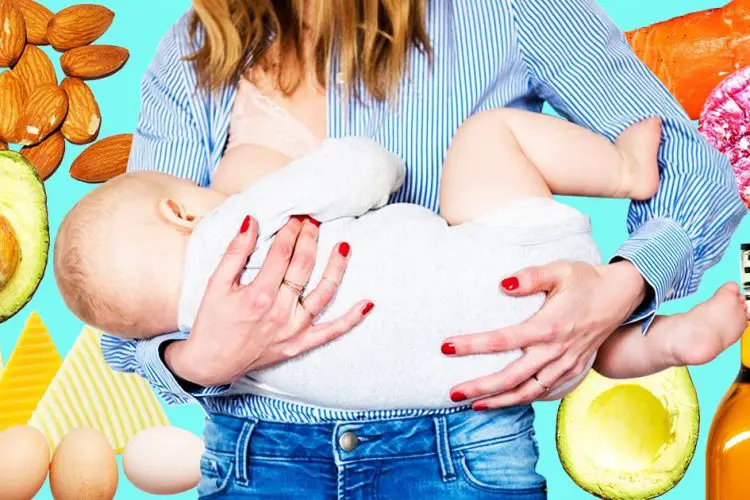 If a food causes a mild reaction, talk to your health visitor or doctor about whether you should continue to give it. For further information, see Allergies & Food Intolerances.
If a food causes a mild reaction, talk to your health visitor or doctor about whether you should continue to give it. For further information, see Allergies & Food Intolerances.
Nutrition Requirements
Vitamins and minerals
The UK Department of Health recommend that all babies be given supplements including vitamins A, C and D from 6 months, and a vitamin D supplement from birth for breastfed babies and those receiving less than 500ml of formula per day.4
Iron
A healthy full-term baby has sufficient iron stores at birth, and delayed cord clamping helps to increase a baby’s iron levels. Iron is present in human milk and bioavailable to the baby, which is sufficient for the first 6 months of a baby’s life. Introduce iron rich foods from six months such as meat, poultry, fish, egg, pulses/legumes (e.g. chickpeas and lentils) and fortified cereals.
Vitamin D
This is produced when our bodies are exposed to sufficient sunlight. Wearing clothes and suncream to protect against skin cancer limits how much vitamin D we can produce. Vitamin D supplements are particularly important for babies who have limited exposure to sunlight and for babies with darker skin colour living in the UK. Breastmilk doesn’t contain high levels of vitamin D as, in the past, babies would absorb most of their vitamin D from exposure to sunlight.
Wearing clothes and suncream to protect against skin cancer limits how much vitamin D we can produce. Vitamin D supplements are particularly important for babies who have limited exposure to sunlight and for babies with darker skin colour living in the UK. Breastmilk doesn’t contain high levels of vitamin D as, in the past, babies would absorb most of their vitamin D from exposure to sunlight.
Vitamin B12
This is found in animal protein. Your baby may need vitamin B12 supplements if you eat a strict vegetarian or vegan diet.5
Nutritional needs of preterm babies
A premature baby does not have a good iron store at birth. If your baby was born before 34 weeks, they may already be receiving iron, zinc and vitamin supplements. Your preterm baby’s healthcare team will be able to give more specific guidance regarding their individual nutritional needs.
Good First Foods
Offering your baby a wide variety of foods in as close to their natural state as possible will ensure they receive a range of nutrients. Highly processed, low-fat or ready-prepared adult foods are not suitable for babies. You don’t need to buy ready-prepared baby food. These foods are expensive, often come in over-large portions and may contain added ingredients your baby doesn’t need. If you choose to buy convenience foods, check labels carefully.
Highly processed, low-fat or ready-prepared adult foods are not suitable for babies. You don’t need to buy ready-prepared baby food. These foods are expensive, often come in over-large portions and may contain added ingredients your baby doesn’t need. If you choose to buy convenience foods, check labels carefully.
To preserve nutrients as much as possible, bake, steam or cook foods in water. Take out a small portion for your baby before adding any salt or sugar to the rest. Allow it to cool to a suitable temperature. Offering finger foods avoids the need to add extras your baby may not be ready for, such as milk or butter.
Note: Some foods can trigger allergic reactions in some babies. See further down this article for more information.
| Food | Serving Suggestion | Notes |
|---|---|---|
| Vegetables (e.g. carrot, pea, sweet potato, potato) | Cook lightly to soften if needed. Give sticks or adult finger-sized pieces. 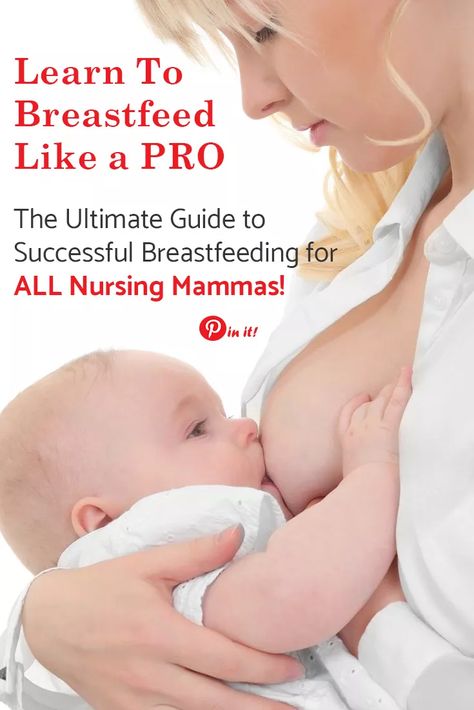 | Remove skin if needed. Avoid small chunks of raw hard vegetables, such as carrots, which could cause choking. |
| Fruit (e.g. apple, banana, avocado) | Give your baby a whole fruit or large piece to hold. | Remove skin and stones if needed. Small chunks can cause choking |
| Poultry (e.g. chicken) Meat | Give large pieces of lean cooked meat, moisten with meat juices. | Make sure to remove any bones and gristle. |
| Fish | Poach in a little water (no salt) or oven bake. | Check carefully for bones. Fish can be allergenic so introduce it with caution. Don’t introduce shellfish, smoked fish or pickled fish until your baby is over 12 months. |
| Rice cakes Oat cakes Crackers | Spread soft foods on, or use them for dipping. | Plain, unsalted rice cakes, oat cakes and crackers are useful alternatives to rusks. |
| Beans Lentils | Cooked beans and lentils can be mashed to make a spread or dip.  | Cook all beans and lentils thoroughly. |
| Dried fruit | Cut up larger fruits such as apricots. Apricots and prunes can be cooked in a small amount of water to make a nutritious spread. | Although rich in nutrients, dried fruit can stick to teeth and if given frequently can cause tooth decay even if you clean your baby’s teeth regularly. |
| Wholegrain cereals such as oats, corn (maize) and wheat | Can be cooked with water, without salt, sugar or sweetener. Choose unsweetened breakfast cereals. | Most cereals contain a protein called gluten, a potential sensitizer, so avoid mixed-grain cereals until you know your baby can tolerate each one individually. |
| Bread Pasta Rice | Bread and pasta are easy finger foods. Serve pasta plain, with butter or grated cheese. | Avoid pasta made with eggs until you know your baby can tolerate egg. |
| Cottage cheese, yoghurt, fromage frais, butter, unprocessed cheese | Your baby can use a spoon or their fingers.  Useful with cooked vegetables. Grate cheese or serve slices. Useful with cooked vegetables. Grate cheese or serve slices. | Use unsalted butter. |
| Eggs | Can be served scrambled, boiled, poached, in an omelette, etc. | If lion-stamped, egg can be served raw. Otherwise, cook until both white and yolk are solid. |
| Nuts and seeds (e.g. peanut butter, tahini) | Should be spread thinly. Only use smooth varieties. | Never give whole nuts or seeds until 5 years of age. Crunchy nut butter varieties can cause choking. |
Foods to avoid
Salt can overload a baby’s system and too much can cause kidney failure. Highly salted foods may foster a taste for salty foods. Avoid and minimize the use of processed foods, packet mixes, crisps, savoury snacks, gravy and condiments such as ketchup, yeast extract, mustard and brown sauce. When buying convenience foods look for low salt versions, including tinned beans and vegetables canned only in water.
White sugar contains virtually no nutrients and is a major factor in tooth decay. When checking food labels watch for other names for sugars – such as glucose, dextrose, sucrose, corn syrup and fructose. Molasses, maple syrup and honey are also almost pure sugar and can displace healthy nutritious foods. Many processed foods which are advertised for babies have high sugar content and should be avoided, including teething biscuits and baby rusks.
Honey may contain botulism spores and should not be given to babies younger than one year.
Teething biscuits are often high in sugar. Your baby can teethe using anything hard and safe to chew on, including unsalted rice cakes or crusty bread.
Artificial sweeteners are present in many processed foods and drinks aimed at babies and children, including juice drinks, ready meals and jars, and snack foods. Children who eat food with artificial sweeteners may be more likely to develop a ‘sweet tooth’ and a preference for sweet food in later life.
Children who eat food with artificial sweeteners may be more likely to develop a ‘sweet tooth’ and a preference for sweet food in later life.
Artificial flavourings and food colouring are unnecessary chemicals.
Foods high in saturated fats. While babies need fats in their diet, foods containing unnecessary saturated fats, such as fried foods, should be offered only in moderation.
Very hot spicy food. Many babies like spicy food, but very hot spices, especially chillies, may be unpleasant for a baby.
Shark, swordfish and marlin all contain high levels of mercury.
Drinks
Water, human milk and formula are the only recommended drinks until 1 year old.
At mealtimes offer some plain tap water in a baby-sized (shot glass size) cup. You don’t need to use bottles or spouted cups but, if you do, a free flow cup is better than one with a non-spill valve on which a baby needs to bite to get the drink to flow.
Avoid juices, sugary drinks and those with artificial sweeteners. Even unsweetened juices contain natural fruit sugars and acids that can damage teeth. They can leave no room for nutritious foods and it can be hard to limit them once you start them.
Avoid giving bottled water, which may have high mineral levels, and drinks that contain caffeine. This includes fizzy and other soft drinks, tea and coffee.
Can I offer cow’s milk as a drink?
Cow’s milk is not suitable as a drink until after 12 months. Instead offer water, human milk or formula. However, you can use cow’s milk when cooking for your baby, for example in porridge and sauces. Other dairy products can be offered to your baby as a food e.g. cheese, yogurt, cream.
After 1 year of age, cow’s milk can be given as a drink. Follow-on and toddler formulas are not necessary.
Further Reading
The Womanly Art of Breastfeeding. LLLI. London: Pinter & Martin, 2010.
My Child Won’t Eat. González, C. MD. London: Pinter & Martin, 2020.
Baby-Led Weaning The Essential Guide. Rapley, G. & Murkett, T. Experiment, 2019.
Why Starting Solids Matters. Brown, A. Pinter & Martin, 2017.
Starting Solids DVD. LLLGB, 2007.
How Weaning Happens. Bengson, D. Schaumburg, IL: LLLI, 1999.
LLLGB articles (and Leaflets & Information Sheets available from our LLLGB Shop)
Allergy and Food Intolerance
Amazing Milk
Thinking of Weaning?
Still Nursing
Toddlers and Food
Online Information
First Steps Nutrition Trust firststepsnutrition.org/ eating-well-infants-new-mums
NHS: Your baby’s first solid foods
Start 4 life nhs.uk/start4life/weaning/safe-weaning
Unicef unicef.org/nutrition
GP Infant Feeding Network gpifn.org.uk/introducing-solids/
References
1Why Starting Solids Matters. Brown, A. Pinter & Martin, 2017.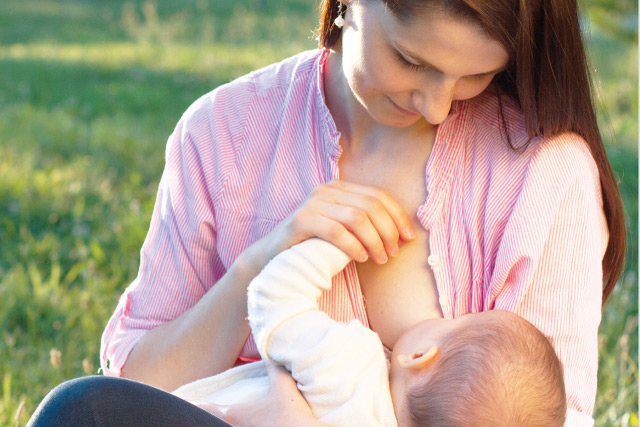
2LLLGB: Baby-led weaning and choking
3Scientific Advisory Committee on Nutrition. Feeding in the First Year of Life, July 2018:
4NHS: Vitamins for Children
5NHS: Vegetarian and vegan diets Q&A
Breastfeeding after 1 month: what to expect
Do you know when breast milk production stabilizes? And how does the frequency and duration of feedings change as the baby grows? You will find answers to these questions in our recommendations for breastfeeding after the first month.
Share this information
Congratulations: You made it through the first month of breastfeeding. Your breast milk has reached full maturity 1 , its production stabilizes, and it leaks almost or not at all from the chest. Don't worry, it's not getting less milk, it's just that your breasts are better able to produce and store it now. 2 At the age of six weeks, your baby will begin to please you with his charming toothless smiles, and by two months you will already have 500-600 feedings behind you.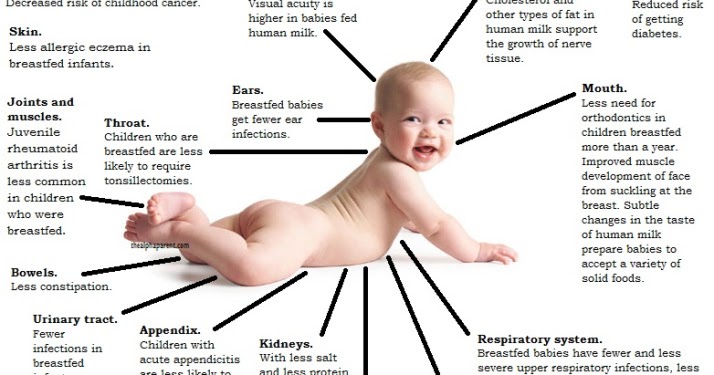 With a favorable development of events, problems with latch on by this point will already be resolved, and you can simply enjoy the convenience and benefits of breastfeeding.
With a favorable development of events, problems with latch on by this point will already be resolved, and you can simply enjoy the convenience and benefits of breastfeeding.
When does breastfeeding decrease?
"Normal" feeding frequency for babies aged one to six months varies considerably, with some needing four feedings a day, others asking to be breastfed 13 times a day. 3
“From the age of one month, the amount of milk a baby consumes per feed increases, so that he can go without food for longer,” explains Cathy Garbin, a recognized international expert on breastfeeding, “A baby’s stomach grows, so he eat more at one time. In addition, mature milk allows him to stay full longer.”
Feeding can last from 12 minutes to one hour -
the habits of babies vary so much! 3 But if the child is gaining weight and falls within this range, there is no cause for concern.
What is most surprising, no matter how often the baby eats, he consumes approximately the same amount of milk per day - both at one month and at six, when it is time to start complementary foods with solid food. 4
4
“However, sometimes the baby eats more and sometimes less, especially when he is unwell. It’s better to just listen to his needs,” Katie explains.
Is breast milk enough for the first six months?
Yes. Breast milk contains everything a baby needs for the first 90,023 six months of life—exclusively breastfed babies don't even need to drink more water! 5 Until about six months of age, a child's digestive system is simply not adapted to the digestion of solid food, and he will be able to drink cow's milk only after a year.
In addition, breastfeeding during this period prepares the child for further development. It strengthens the muscles of the mouth, develops the jaw and helps straighten the teeth 6.7 . All this will come in handy when the baby begins to eat and talk. And because what you eat and drink affects how your breast milk tastes, your baby discovers new tastes even before he starts eating solid foods. 8
In addition, when your baby is sick, your body produces breast milk that is
rich in antibodies that help fight infection.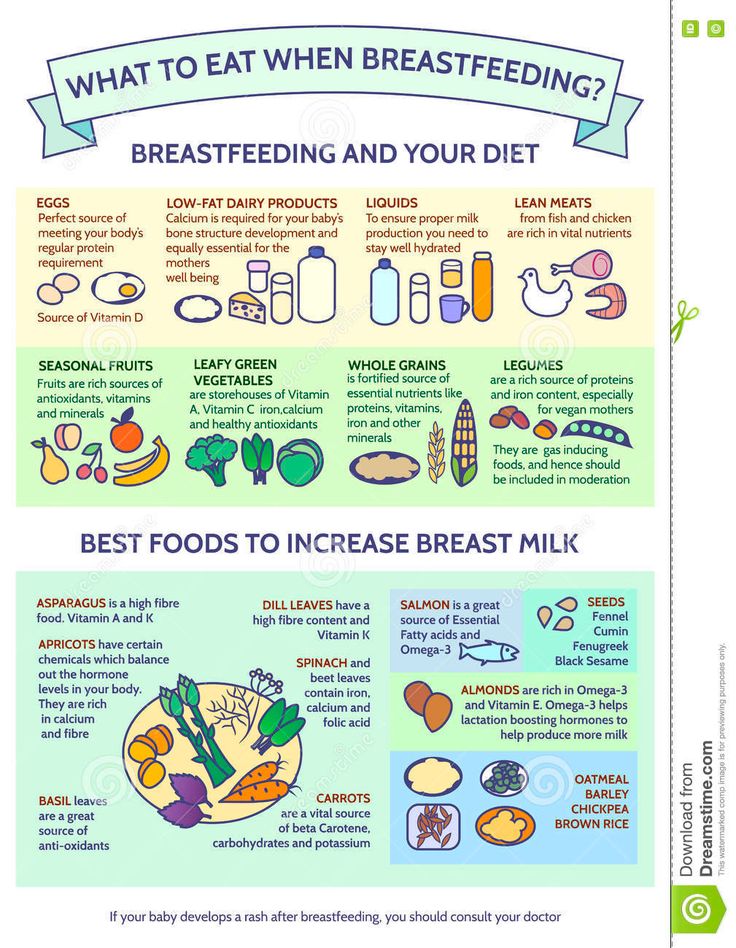 9 In other words, milk continues to protect the baby for many months as he grows and becomes more active.
9 In other words, milk continues to protect the baby for many months as he grows and becomes more active.
Breastfeeding is also very comfortable once you get used to it. Claudia, a mother of two from the UK, notes: “No need to sterilize a mountain of bottles, prepare formula, carry it all with you, warm it up - in general, breastfeeding turned out to be very convenient, especially when my babies grew up and we began to leave the house more often. ".
At what age does a breastfed baby start sleeping through the night?
Waking up at night is normal for babies. Most babies between the ages of one and six months consume a fifth of their daily milk requirement at night, so nighttime feedings should not be neglected if you want your baby to get the required amount of calories. 3
"It really depends on what you mean by 'sleep through the night'," says Cathy. "And it's better than waking up every two hours anyway! I have met infants who, starting at six weeks old, fell asleep at 19:00 and woke up at 7:00, but most continue to wake up frequently at night after this age. All children are different."
All children are different."
In Wales, a study of more than 700 infants showed that almost 80% of children aged 6 to 12 months wake up at least once a night, and 25% of them wake up three times or more. And it did not depend on what type of feeding the child is on - breastfeeding or artificial. 10
And if nighttime awakenings are unavoidable anyway, breastfeeding is at least comfortable! Maina, a mother of two from Australia, agrees: “You can even take a nap while feeding in the middle of the night - both the body and the baby do their job on autopilot. No need to plan, measure, sterilize anything - ready-made food at the right temperature is right in your chest. I think it's ideal."
My child wakes up more often. Perhaps he is hungry?
Around four months of age, a baby's sleep patterns change as they develop deep and light sleep phases like an adult. Because of this, he may wake up more often at night. “At four months, sleep is more of a problem than feeding,” Cathy admits.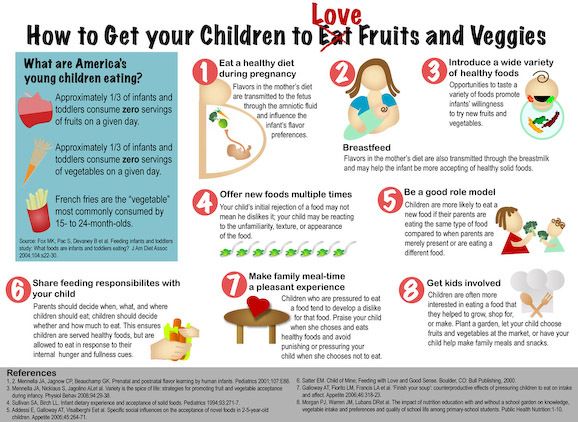 “It can be exhausting, but try to adapt and be patient.”
“It can be exhausting, but try to adapt and be patient.”
Some call this " a four-month sleep regression ", but "progress" is more appropriate here. From the outside it may look like a step back, but in fact the child is approaching an important stage of development. He learns quickly, begins to become aware of the world around him, his perception is sharpened and, perhaps, there is anxiety about being separated from his mother. Crying when waking up and being able to eat milk cuddled up to mommy’s chest is a way for a baby to calm down. 11–13
Resist the urge to “supplement” your baby with formula or start solid foods early
in an attempt to improve his sleep. Breast milk contains
hormones that make you sleepy and help you both relax
. Research shows that breastfeeding mothers actually sleep longer at night than mothers of formula-fed or mixed-fed babies
. 14
How does teething affect breastfeeding?
Teething usually begins around four months of age. When a baby has gum pain, he becomes restless, throws his chest and cries. All this, of course, is unpleasant.
When a baby has gum pain, he becomes restless, throws his chest and cries. All this, of course, is unpleasant.
However, breastfeeding can be an excellent sedative.
Studies have shown that babies who are breastfed
during the vaccination period cry less and forget pain more quickly. 15 Breastfeeding during teething can have the same calming effect.
An unpleasant side effect may be the child's attempts to try out his new teeth on the mother's breast. “Sometimes children flirt and bite their mother’s nipples. This can be felt in advance by how the behavior of the child changes when feeding: before biting, he removes his tongue, explains Cathy, “Usually this is not a problem and only happens a couple of times. It is enough to stop feeding, affectionately say that biting is not good, and the baby will soon leave this fun.
How to continue feeding if you have to be separated from the baby?
It happens that during the first six months, when the baby is still fully breastfed, the mother needs to be away for several hours - or even longer if she has to go to work or go away on business for a couple of days.
But this does not mean that you should stop breastfeeding. You can still feed your baby healthy breast milk - just express it and have someone give it to your baby when you're away. Here's Katie's advice:
“Start expressing milk a couple of days in advance, in small batches, 40-60 ml at a time. So you will have the necessary supply for the time of your absence, but at the same time the amount of milk produced will remain the same.
If you have to return to work, check with your employer about your daily schedule. Many mothers breastfeed their babies in the morning, evening and night, and pump milk at lunchtime to relieve discomfort and create a reserve for the next day.
This usually turns out to be much easier than one might think, and today many companies are well placed to do this, notes Cathy. “Breast pumps make it easy to solve this problem.”
Natalie, mother from the USA, shares her experience: “I feed Dylan as soon as he wakes up, and sometimes again before leaving for work, in order to maintain milk production and not lose contact with the child. At work, I pump twice the next day (in my absence, he eats two bottles of breast milk), and after work I rush home for the evening feed. I don't pump on the weekends - we resume regular breastfeeding."
At work, I pump twice the next day (in my absence, he eats two bottles of breast milk), and after work I rush home for the evening feed. I don't pump on the weekends - we resume regular breastfeeding."
Can breastfeeding continue after the introduction of solid foods?
When your baby begins to show interest in food and can sit up on his own - usually around six months of age - it's time to start solid foods. However, it is not necessary to stop breastfeeding, Cathy explains: “A baby’s iron stores during pregnancy are depleted by six months, so he needs additional sources of this element.
Start complementary foods with solid foods, but remember that breast milk remains a more important source of calories and nutrients until the baby is eight to nine months old. By this time, he will be eating much more solid food, but he will still need to breastfeed four to five times a day. By 12 months, the frequency of feeding may be two to six times a day. All babies are different, and many of them at this age are still getting half their daily calorie intake from breast milk.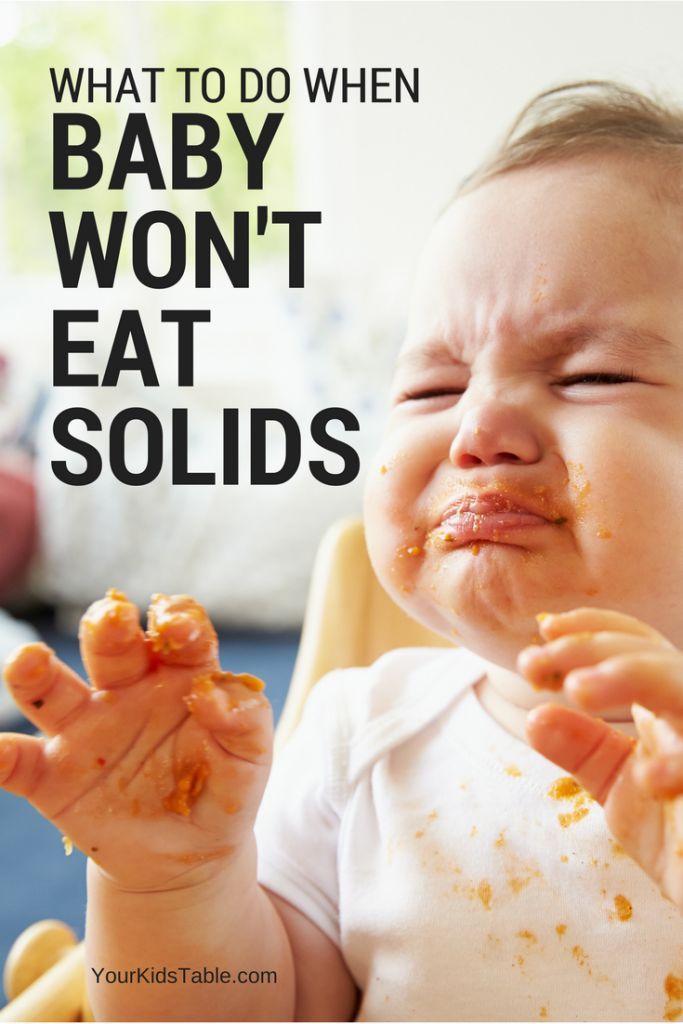 ”
”
Don't forget that breast milk can be added to solid foods, such as cereals and purees, so that the baby can taste the familiar taste. If possible, use milk expressed just before feeding (not thawed) and add just before serving to keep bacteria and nutrients alive. 16
You may be pressured by others to stop breastfeeding when your baby is six months old, but the longer you breastfeed or pump milk, the better for you and your baby.
How long can I continue breastfeeding?
“The World Health Organization recommends breastfeeding along with solid foods until at least two years of age because it plays an important role in supporting immunity,” says Cathy. feels bad".
At eight months, the baby sometimes breastfeeds four times a day, but by one year old, the frequency of feedings can be reduced to two times a day. You yourself will understand which feeding regimen is more suitable for you and your baby. For example, Jane, a mother of two from the US, breastfed until the age of two: “I breastfed when I was at home - in the evenings and on weekends, when the children wanted to be close to me,” says Jane, “It helped a lot when they were sick . Breastfeeding has become my favorite form of comfort."
Breastfeeding has become my favorite form of comfort."
“When my son got a little older and bolder, he still often asked me to breastfeed him - as if to calm down and gain strength,” recalls Amy, a mother of two children from Canada, “When he happened to hit or skin his knee , breastfeeding was a wonderful way to comfort him.”
If your baby is over a year old and you are still breastfeeding, people around you will probably tell you that this way he will never wean. But if children are not pressured, they usually refuse to breastfeed themselves between the ages of two and four. 17
“I didn’t intend to breastfeed for so long, but as a result, I still breastfeed my four-year-old daughter and 22-month-old son,” says Suzanne, mother of two from the UK, “I breastfeed my youngest before and after work, and in I express milk on business trips. The eldest daughter likes to breastfeed a little before bed or when she is upset - this is a great way to make contact. When I get tired of it, I remind myself what great benefit and comfort it brings them. I now plan to pursue a baby-initiated end breastfeeding strategy — let them decide when to stop.”
When I get tired of it, I remind myself what great benefit and comfort it brings them. I now plan to pursue a baby-initiated end breastfeeding strategy — let them decide when to stop.”
For more information on what to expect and lots of tips and tricks, see our guide Breastfeeding Problems After the First Month.
Literature
1 Ballard O, Morrow AL. Human milk composition: nutrients and bioactive factors. Pediatr Clin North Am . 2013;60(1):49-74. - Ballard O., Morrow A.L., "Composition of breast milk: nutrients and biologically active factors." Pediatrician Clean North Am. 2013;60(1):49-74.
2 Kent JC et al. Principles for maintaining or increasing breast milk production. J 2012;41(1):114-21. - Kent J.S. et al., "Principles for Maintaining and Increasing Milk Production". J Obstet Ginecol and Neonatal Nurse. 2012;41(1):114-121.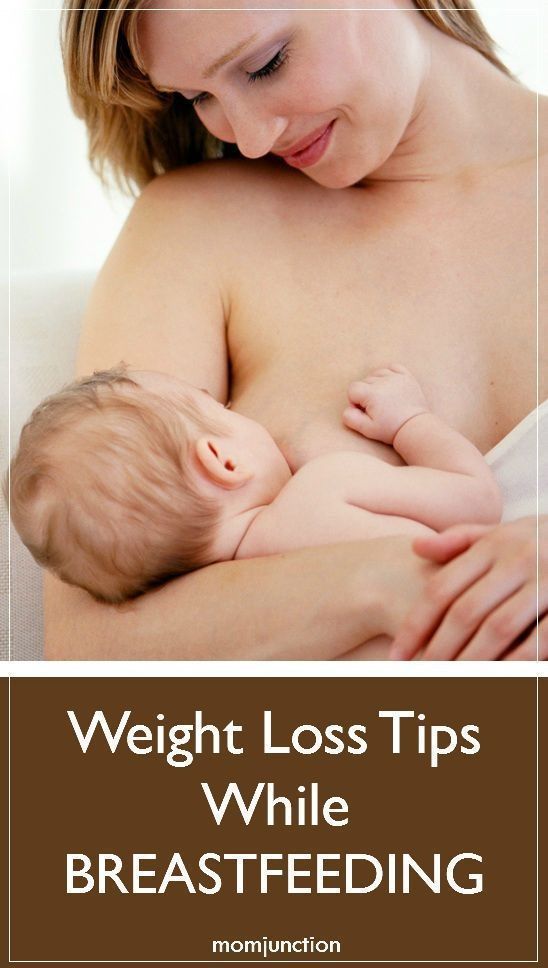
3 Kent JC Volume and frequency of breastfeedings and fat content of breast milk throughout the day. Pediatrics. 2006;117(3): e 387-395. - Kent J.S. et al., "Amount and frequency of breastfeeding and fat content of breast milk during the day." Pediatrix (Pediatrics). 2006;117(3):e387-95.
4 Kent JC et al. Longitudinal changes in breastfeeding patterns from 1 to 6 months of lactation. Breast Med . 2013;8(4):401-407. - Kent J.S. et al., Longitudinal changes in breastfeeding patterns from 1 to 6 months of lactation. Brest Med. 2013;8(4):401-407.
5 Almroth S, Bidinger PD. No need for water supplementation for exclusively breast-fed infants under hot and arid conditions. Trans R Soc 1990;84(4):602-604. - Elmroth S., Bidinger P.D. , "No need for supplementation of exclusively breastfed infants in hot, dry conditions." Trans R Sots Trop Med Hyg. 1990;84(4):602-604.
, "No need for supplementation of exclusively breastfed infants in hot, dry conditions." Trans R Sots Trop Med Hyg. 1990;84(4):602-604.
6 Victora CG et al . Breastfeeding in the 21st century: epidemiology, mechanisms, and lifelong effect. Lancet. 2016;387(10017):475-490. - Victor S.J. et al., "Breastfeeding in the 21st century: epidemiology, mechanisms and long-term effects". Lancet 2016;387(10017):475-490.
7 Peres KG et al. Effect of breastfeeding on malocclusions: a systematic review and meta - analysis. Acta Paediatr. 2015;104( S 467):54-61. - Perez K.G. et al., "The impact of breastfeeding on malocclusion: a systematic review and meta-analysis". Akta Pediatr. 2015;104(S467):54-61.
8 Mennella JA, Beauchamp GK. Maternal diet alters the sensory qualities of human milk and the nursling's behavior.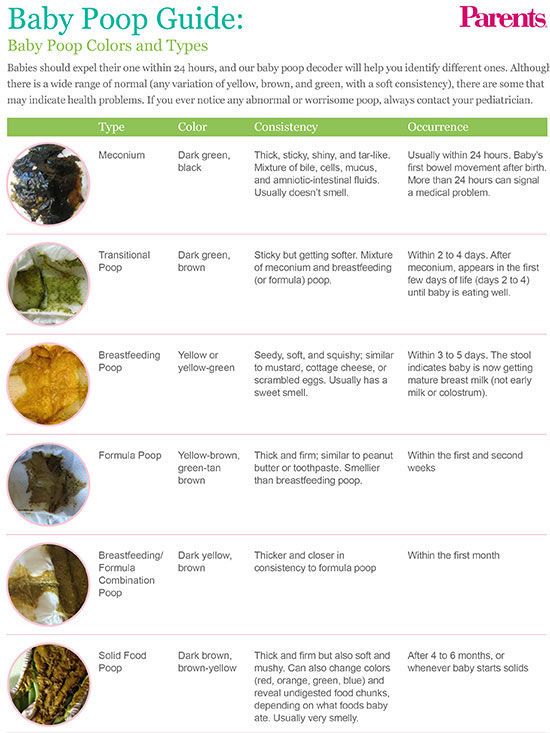 Pediatrics. 1991;88(4):737-744. - Mennella, JA, Beauchamp, GK, "Maternal nutrition influences the organoleptic properties of breast milk and infant behavior." Pediatrix (Pediatrics). 1991;88(4):737-744.
Pediatrics. 1991;88(4):737-744. - Mennella, JA, Beauchamp, GK, "Maternal nutrition influences the organoleptic properties of breast milk and infant behavior." Pediatrix (Pediatrics). 1991;88(4):737-744.
9 Hassiotou F et al. Maternal and infant infections stimulate a rapid leukocyte response in breastmilk. Clin Transl immunology. 2013;2(4). - Hassiot F. et al., "Infectious diseases of the mother and child stimulate a rapid leukocyte reaction in breast milk." Clean Transl Immunology. 2013;2(4).
10 Brown A, Harries V. Infant sleep and night feeding patterns during later infancy: Association with breastfeeding frequency, daytime complementary food intake, and infant weight. Breast Med . 2015;10(5):246-252. - Brown A., Harris W., "Night feedings and infant sleep in the first year of life and their association with feeding frequency, daytime supplementation, and infant weight.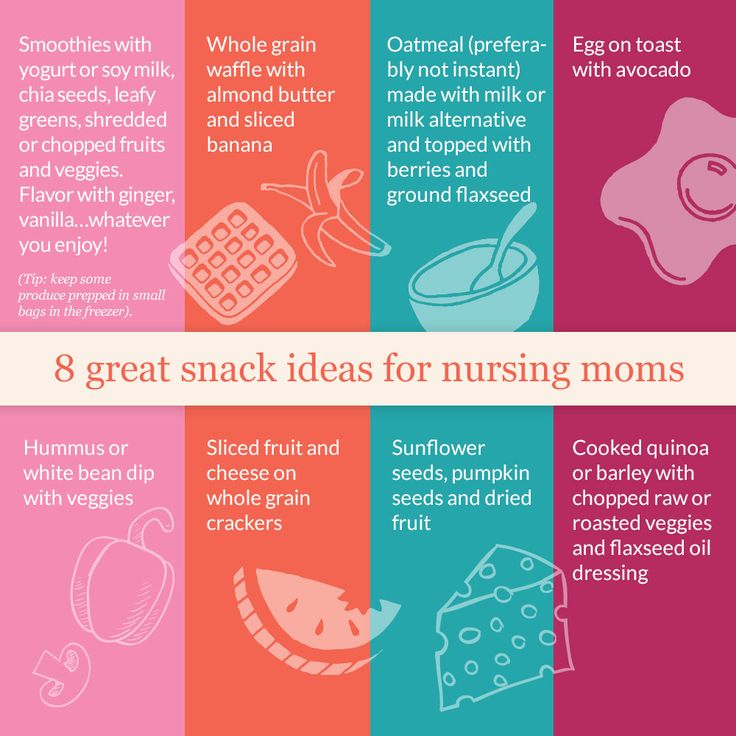 " Brest Med (Breastfeeding Medicine). 2015;10(5):246-252.
" Brest Med (Breastfeeding Medicine). 2015;10(5):246-252.
11 Infant sleep information source. [Internet]. Normal Infant Sleep Development; December 2017 [cited 2018 Feb] - All about baby sleep. [Internet] "The development of normal sleep in a child", December 2017 [cited February 2018].
12 Baby sleep science. [Internet]. The-Four-Month-Sleep-Regression-What-is-it-and-What-can-be-Done-About-it. March 2014 [ cited 2018 Feb ] - The science of baby sleep. [Internet], "Four-month sleep regression: what it is and what to do about it." March 2014 [cited February 2018].
13 The Myth Of Baby Sleep Regressions – What’s Really Happening To Your Baby’s Sleep? [Internet]. Pinky Mckay ; December 2017 [ cited 2018 Feb ] - "The Myth of Baby Sleep Regression - What's Really Happening to Your Baby?" [Internet]. Pinky McKay, December 2017 [cited February 2018].
Pinky McKay, December 2017 [cited February 2018].
14 Kendall - Tackett K ET Al . The effect of feeding method on sleep duration, maternal well-being, and postpartum depression. Clinical Lactation . 2011;2(2):22-26. - Kendall-Tuckett K. et al., "Influence of feeding pattern on sleep duration, maternal well-being and the development of postpartum depression." Clinical Lactation. 2011;2(2):22-26.
15) Harrison D et al. Breastfeeding for procedural pain in infants beyond the neonatal period. Cochrane Database Syst Rev . 2014;10. — Harrison D. et al., "Breastfeeding for Relief of Medical Pain in the Neonatal Period." Cochrane Database of System Rev. 2014;10:CD11248
16 Czank C et al. Retention of the immunological proteins of pasteurized human milk in relation to pasteurizer design and practice. Pediatr Res . 2009;66(4):374. - Zhank S. et al., "Retention of immunological proteins in pasteurized milk depending on the technique and practice of pasteurization". Pediatrician Res. 2009;66(4):374.
Retention of the immunological proteins of pasteurized human milk in relation to pasteurizer design and practice. Pediatr Res . 2009;66(4):374. - Zhank S. et al., "Retention of immunological proteins in pasteurized milk depending on the technique and practice of pasteurization". Pediatrician Res. 2009;66(4):374.
17 Weaning from the breast. (2004). Paediatr Child Health, 9(4):249–253. - "Weaning from the breast" (2004). Pediatrician Child Health, 9(4):249–253.
Solid food | Tervisliku toitumise informatsioon
From the age of 6 months, in addition to breast milk, the baby should be supplemented to provide the required amount of energy and nutrients. As you grow older, you can gradually switch to regular food (cooking it without frying, and also without adding salt and sugar). Children over 1 year of age, in addition to regular food and complementary foods, can continue to drink breast milk, but by the age of two, the child should completely switch to a common table.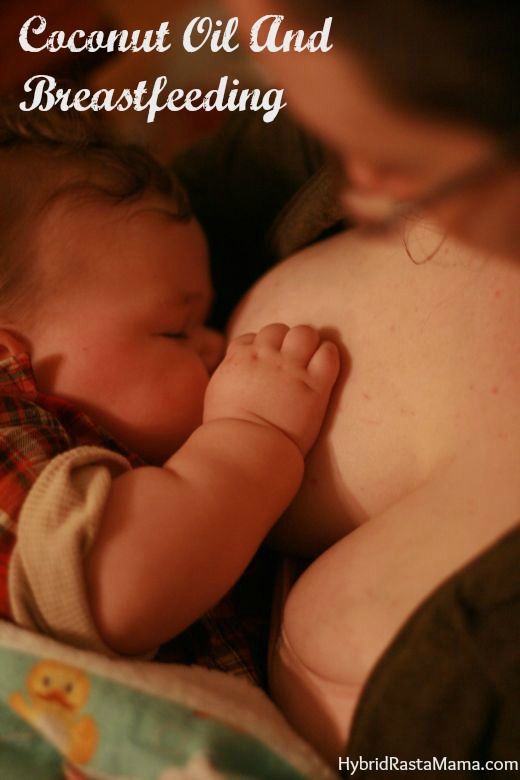 Exposure of a child to grain-containing foods during breastfeeding may protect him from gluten intolerance in the future. When offering a child complementary foods or regular food, care should be taken, so that the food is varied . Both during breastfeeding and when switching to regular food, the baby may experience gases or allergies .
Exposure of a child to grain-containing foods during breastfeeding may protect him from gluten intolerance in the future. When offering a child complementary foods or regular food, care should be taken, so that the food is varied . Both during breastfeeding and when switching to regular food, the baby may experience gases or allergies .
For children over two years of age, the same nutritional guidelines apply as adults, but the recommended serving sizes are smaller.
Children under three years old (actually, a person of any age) do not need salty or sugary snacks, sodas, deep fried and/or very sweet and salty foods!
By the sixth month of life, the infant's eating habits and digestive system are mature enough to offer more solid foods in addition to breast milk. Proteins, carbohydrates and fats contained in regular food are different from the easily digestible sugars, fats and proteins that enter the baby's body with breast milk. Therefore, a so-called certain familiarization period is needed so that the baby's digestive system has time to get used to a new type of food. If the baby is breastfed as often as before, then these feeds cover about 2/3 of the energy needed by an 8-month-old baby. The remaining approximately 200 kilocalories should come from the various macronutrients found in complementary food ingredients, i.e. proteins, fats and carbohydrates. Complementary foods are needed so that the child can slowly move to the common table, as well as to obtain the nutrients necessary for age. Complementary foods for babies are a completely unfamiliar thing. It differs significantly from breast milk and will take time to learn how to eat it.
Therefore, a so-called certain familiarization period is needed so that the baby's digestive system has time to get used to a new type of food. If the baby is breastfed as often as before, then these feeds cover about 2/3 of the energy needed by an 8-month-old baby. The remaining approximately 200 kilocalories should come from the various macronutrients found in complementary food ingredients, i.e. proteins, fats and carbohydrates. Complementary foods are needed so that the child can slowly move to the common table, as well as to obtain the nutrients necessary for age. Complementary foods for babies are a completely unfamiliar thing. It differs significantly from breast milk and will take time to learn how to eat it.
Proper complementary food is food that is hard enough to eat with a spoon, consists of all important types of food (except sweets), is rich in nutrients and does not contain salt and sugar. Complementary foods should always be offered to the child from a spoon and never from a bottle, as in this case the child will never understand what to eat in an upright position using a spoon.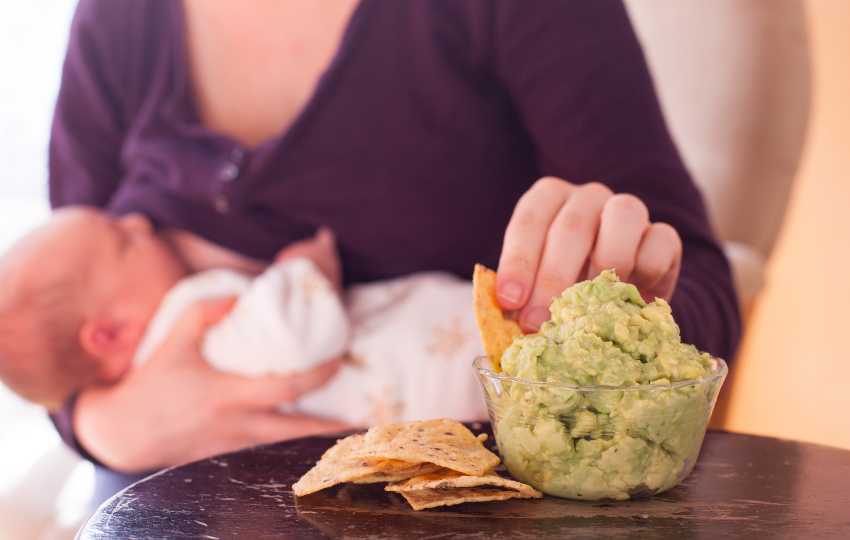 In addition, bottle feeding contains too much water, so it may not provide enough energy and nutrients. As the child grows older, you can allow him to put pieces of food in his mouth with his fingers. Simultaneously with the gradual introduction of solid food into the baby's diet, his interest in breast milk gradually begins to fade. This is completely natural and as the first birthday approaches, you can start to slowly reduce the number of breastfeeds. All children are different, so their preferences and needs are also different, but it is important that the child's diet is varied and covers all the nutritional needs of a growing body for life and development.
In addition, bottle feeding contains too much water, so it may not provide enough energy and nutrients. As the child grows older, you can allow him to put pieces of food in his mouth with his fingers. Simultaneously with the gradual introduction of solid food into the baby's diet, his interest in breast milk gradually begins to fade. This is completely natural and as the first birthday approaches, you can start to slowly reduce the number of breastfeeds. All children are different, so their preferences and needs are also different, but it is important that the child's diet is varied and covers all the nutritional needs of a growing body for life and development.
Complementary foods for infants by month:
0-6 months
6-8 months
9-11 months
substances can be markedly reduced.
World Health Organization recommendations for the introduction of complementary foods for children aged 6-23 months.
| Age (in months) | Frequency of feedings | The portion for 1 feeding | Power consistency |
| 6 | or 2 times a day 9000 1 or 2 times a day 9000 1 or 2 times a day 9000 1 or 2 times aim quantity | Finely pounded or pureed | |
| 6-8 | 2-3 feedings a day 9 0519 up to 1 DL | Crowned or pureed | |
|
| 3-4 feeding per day 1-2 Open a day | 1-1. | Crowned or finely busy |
| -2-23 | 3-4 feeding per day 1-2 snacks | 2-2.5 DL | 9000 9000 9000 522 |
The recommendations in the table are general and give an idea of how much a child could eat on average, however the exact amount and frequency of feedings may vary from child to child. The child must learn to understand that when the feeling of satiety has come, eating should be stopped. A child is full when he turns his head away and doesn't want to eat anymore. However, it is important to make sure that the baby still ate at least a little, as many children refuse to eat before they even start eating. We need to find a balance between these two extremes. The child should be introduced as early as possible to the regularity of meals and the fact that constant snacking should be avoided during the day.
 5 DL Dl 9000 1-1.5 DL DL 9000 1-1.5 DL DL 9000 1-1.5 DL Dl 9000 1-1.5 DL Dl 9000 1-1.5 DL
5 DL Dl 9000 1-1.5 DL DL 9000 1-1.5 DL DL 9000 1-1.5 DL Dl 9000 1-1.5 DL Dl 9000 1-1.5 DL 